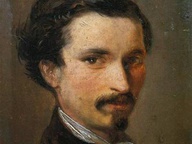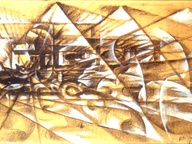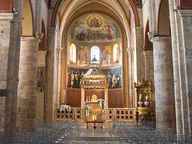Treviso,
- Artist: Palladio
- Location: Treviso,
- Date: 1558 - 1558
DESCRIZIONE:
Villa Emo is an Italian villa in the Veneto near the village of Fanzolo di Vedelago. It was designed by Andrea Palladio in 1559 for the Emo family of Venice and remained in the hands of the Emo family until it was sold in 2004. Since 1996, it has been conserved as part of the World Heritage Site "City of Vicenza and the Palladian Villas of the Veneto".
It is one of the most accomplished of the Palladian Villas, showing the benefit of 20 years of Palladio's experience in domestic architecture. It has been praised for the simple mathematical relationships expressed in its proportions, both of the elevation and the dimensions of the rooms. In 1570 Palladio published a plan of the villa in his treatise I Quattro Libri dell'Architettura. Unlike some of the other plans he included in this work, the one of Villa Emo corresponds nearly exactly to what was built.
The house is framed by two colonnaded wings which originally housed agricultural activities, for this was a working villa like Villa Badoer and a number of the other designs by Palladio. Andrea Palladio emphasises the usefulness of the lay-out in his treatise. He points out that the grain stores and work areas could be reached under cover, which was particularly important. Also, it was necessary for the Villa Emo's size to correspond to the returns obtained by good management. These returns must in fact have been considerable, for the side-wings of the building are unusually long, a visible symbol of prosperity. The Emo family introduced the cultivation of maize on their estate (and the plant, still new in Europe, is depicted in one of Zelotti's frescoes). In contrast to the traditional cultivation of millet, considerably higher returns could be obtained from the maize.
Villa Emo is an Italian villa in the Veneto near the village of Fanzolo di Vedelago. It was designed by Andrea Palladio in 1559 for the Emo family of Venice and remained in the hands of the Emo family until it was sold in 2004. Since 1996, it has been conserved as part of the World Heritage Site "City of Vicenza and the Palladian Villas of the Veneto".
The building of Villa Emo was the culmination of a long-lasting project of the patrician Emo family of the Republic of Venice to develop its estates at Fanzolo. In 1509, which saw the defeat of Venice in the War of the League of Cambrai, the estate on which the villa was to be built was bought by Leonardo di Giovanni Emo from the Barbarigo family. The landscape of Fanzolo has a continuous history since Roman times and it has been suggested that the layout of the villa reflects the straight lines of the Roman roads.
The Emo family's central interest was at first in the cultivation of their newly-acquired land. Not until two generations had passed did Leonardo di Alvise Emo commission Palladio to build a new villa in Fanzolo. We unfortunately do not have any firm dates for the commencement of the new building: the years 1555 or 1558 have been proposed. The date of completion is put at 1565; a document which attests to the marriage of Leonardo di Alvise with Cornelia Grimani has come down to us from that yearIt is one of the most accomplished of the Palladian Villas, showing the benefit of 20 years of Palladio's experience in domestic architecture. It has been praised for the simple mathematical relationships expressed in its proportions, both of the elevation and the dimensions of the rooms. In 1570 Palladio published a plan of the villa in his treatise I Quattro Libri dell'Architettura. Unlike some of the other plans he included in this work, the one of Villa Emo corresponds nearly exactly to what was built.
The house is framed by two colonnaded wings which originally housed agricultural activities, for this was a working villa like Villa Badoer and a number of the other designs by Palladio. Andrea Palladio emphasises the usefulness of the lay-out in his treatise. He points out that the grain stores and work areas could be reached under cover, which was particularly important. Also, it was necessary for the Villa Emo's size to correspond to the returns obtained by good management. These returns must in fact have been considerable, for the side-wings of the building are unusually long, a visible symbol of prosperity. The Emo family introduced the cultivation of maize on their estate (and the plant, still new in Europe, is depicted in one of Zelotti's frescoes). In contrast to the traditional cultivation of millet, considerably higher returns could be obtained from the maize.
COMMENTI
LE OPERE
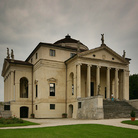 Villa La Rotonda
Trono
Villa La Rotonda
Trono
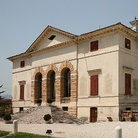 Villa Caldogno
Trono
Villa Caldogno
Trono
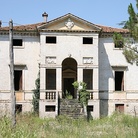 Villa Forni Cerato
Trono
Villa Forni Cerato
Trono
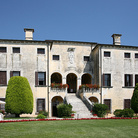 Villa Godi
Trono
Villa Godi
Trono
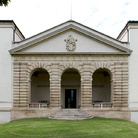 Villa Pisani
Trono
Villa Pisani
Trono
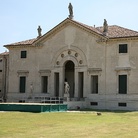 Villa Pojana
Trono
Villa Pojana
Trono
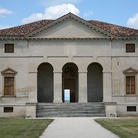 Villa Saraceno
Trono
Villa Saraceno
Trono
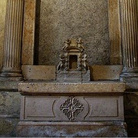 Cappella Valmarana
Cappella
Cappella Valmarana
Cappella
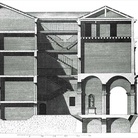 Casa Cogollo
Trono
Casa Cogollo
Trono
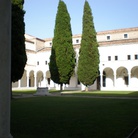 Chiostro palladiano
1579 | Opera architettonica
Chiostro palladiano
1579 | Opera architettonica
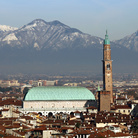 Basilica Palladiana
Trono
Basilica Palladiana
Trono
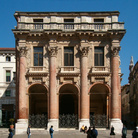 Loggia del Capitaniato
Trono
Loggia del Capitaniato
Trono
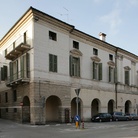 Palazzo Civena Trissino
Trono
Palazzo Civena Trissino
Trono
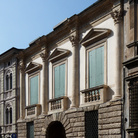 Palazzo da Schio Vaccari Lioy
Trono
Palazzo da Schio Vaccari Lioy
Trono
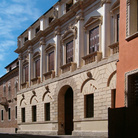 Palazzo Iseppo da Porto
Trono
Palazzo Iseppo da Porto
Trono
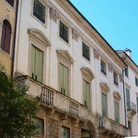 Palazzo Pojana
Trono
Palazzo Pojana
Trono
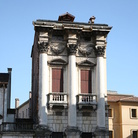 Palazzo Porto Breganze
Trono
Palazzo Porto Breganze
Trono
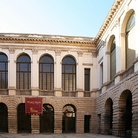 Palazzo Thiene
Trono
Palazzo Thiene
Trono
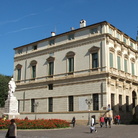 Palazzo Thiene Bonin Longare
Trono
Palazzo Thiene Bonin Longare
Trono
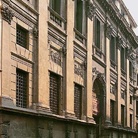 Palazzo Valmarana Braga
Trono
Palazzo Valmarana Braga
Trono
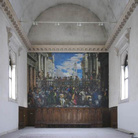 Cenacolo Palladiano
1560 | Opera architettonica
Cenacolo Palladiano
1560 | Opera architettonica
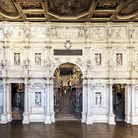 Teatro Olimpico
1580 | Olio e tempera su tavola
Teatro Olimpico
1580 | Olio e tempera su tavola
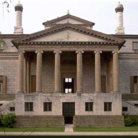 Villa Foscari
1559 | Olio e tempera su tavola
Villa Foscari
1559 | Olio e tempera su tavola
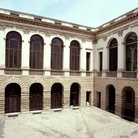 Palazzo Thiene
1542 | Olio e tempera su tavola
Palazzo Thiene
1542 | Olio e tempera su tavola
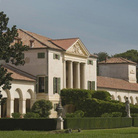 Villa Emo
1558 | Olio e tempera su tavola
Villa Emo
1558 | Olio e tempera su tavola
Map
